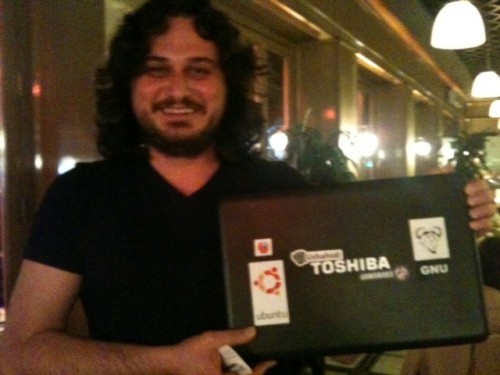When we think about maps and Ushahidi, it is often easy to get caught up in the technology. But, the biggest change is with the people who are deploying and building communities with Ushahidi. These brave souls are trying out new methods to tell map stories. Often, their efforts to break new ground in their communities and countries meet resistance. Some of the risks that they take to amplify issues of human rights, corruption, women's rights and more are simply breathtaking. Yet, they persevere and create. When I meet these brilliant people, I am in awe of the change that they are trying to build. Their passion and drive to use map stories to be involved in their world is infectious and truly inspiring. Each demonstrate the potential of citizens to be truly engaged.
On my own journey, I meet Ushahidi community members online and in person. Often, I have the rich opportunity to watch them learn and build their projects. Our community mentors them, and they, in turn, mentor us. Whenever I am asked to speak at events, I have the honour to share Ushahidi community stories. I firmly believe that Ushahidi is a vehicle for other people's social change. We may be part of that movement, but really, we are giving them a place to germinate ideas, unify and coordinate, model and build. Last week I had the opportunity to do this in Istanbul,Turkey for TedxSilkRoad. I shared the following stories with them:

 Thank you to the community members in Istanbul, to the TedxSilkRoad fellow participants and organizers of TedxSilkRoad.
Thank you to the community members in Istanbul, to the TedxSilkRoad fellow participants and organizers of TedxSilkRoad.
Map it, Change it
View more presentations from Ushahidi
Map it, Change it! can be summarized by five big themes:
- The power of individual to affect change and be citizen engaged. (e.g. Shemeer (Maps4Aid).
- The power of relationships and networks. Partnerships exist both outside and inside formal corporations and institutions. Some of the best deployments are cross-institutional collaborations which include citizens. This can include private, public, community-based, non-government organizations, individuals and more (e.g. map.Occupy.net, Ushahidi Liberia and the Standby Task Force).
- Maps have always connected us and told us stories. What if the map was no longer static, but interactive? Communities connect by topic (topical maps like human rights, corruption and more) and even include diaspora communities. (e.g. Somalia Speaks). The borders dissolve by using mobile devices and connecting to global communities.
- We are collectively teaching people to "hack the map". People first learn that they can use a map to tell a story, then they learn that they can connect with others to collaborate, and then they change Ushahidi as they evolve best practices, discover methodologies and create techniques. So, really, Ushahidi users "hack" us as they change and explore opportunities to make the software more effective for particular mission. This includes the powerful mentorship and partnership that is growing in the community. People want others to succeed in their efforts, irrespective of location.
- There is a new type of social entrepreneurship evolving with these map deployments. Some start with the mission/project and others tinker with Ushahidi to find a mission/plan. All see the potential and evolve it. They are asking institutions to participate. They are asking why. They are the new mapmakers, storytellers, and disrupters. This type of social entrepreneurship is at its nascent stages. This includes groups like WaterTracker.

Aksam interview
Aksam (A Turkish newspaper) interviewed me about Ushahidi. I hope that this will inspire others in Turkey to use maps to connect. (article in Turkish) Thank you to the community members in Istanbul, to the TedxSilkRoad fellow participants and organizers of TedxSilkRoad.
Thank you to the community members in Istanbul, to the TedxSilkRoad fellow participants and organizers of TedxSilkRoad.